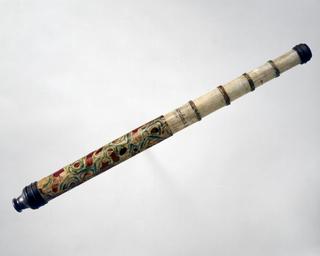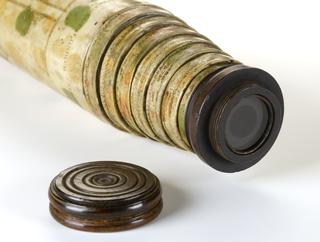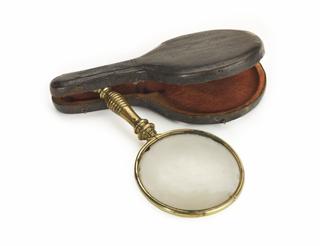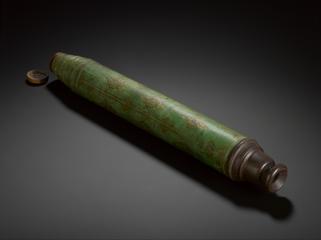
Refracting telescope with achromatic lens, made by the Dollond family
- maker:
- Dollond family






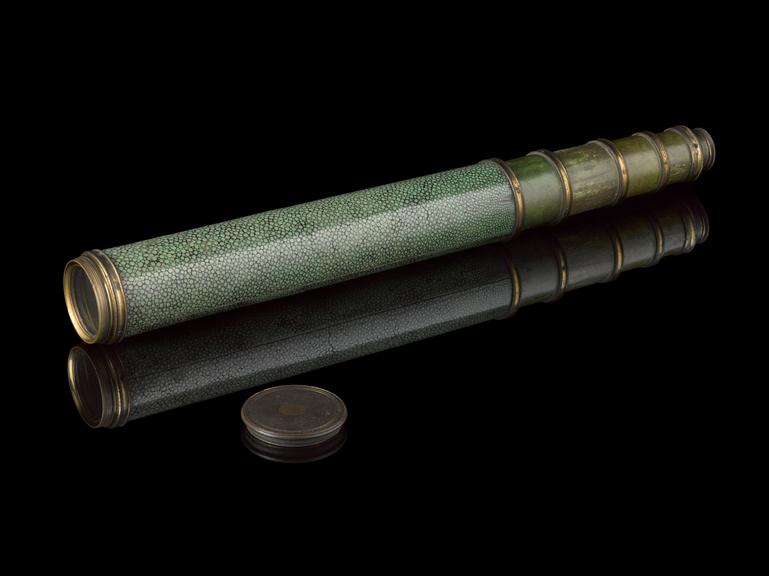




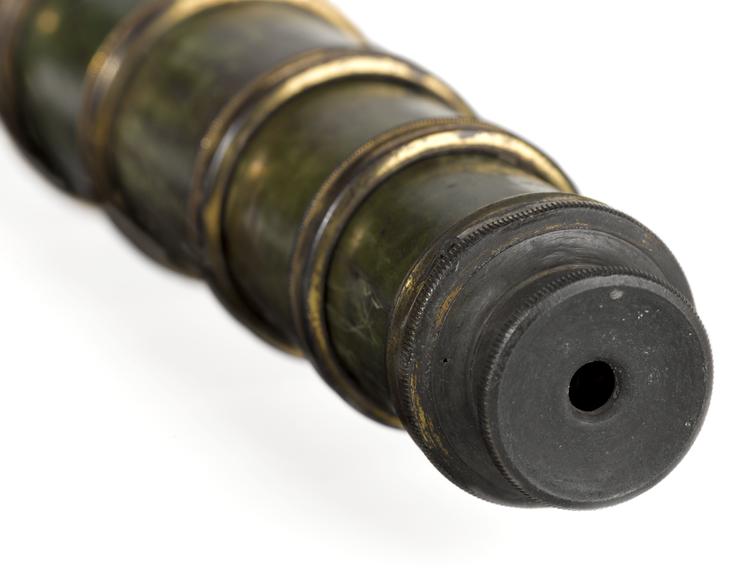
Achromatic refracting telescope for terrestrial use, with an optical lens diameter of 1.4 inches, and focal length 30 inches, by Dollond, London, 1760-1775
Refracting telescopes use glass lenses to magnify images. Until the mid-18th
century, chromatic aberration was a major problem for telescope users. This effect, caused by different wavelengths of light focussing at different points, resulted in distracting coloured haloes around magnified images.
John Dollond took out a patent for an achromatic lens in 1758. He found he could overcome the effect of chromatic aberration by sandwiching two types of glass – crown glass and flint glass – together.
Dollond was not the only maker to produce an achromatic lens. However, his and his family’s aggressive defence of the patent meant his firm was the most successful manufacturer of such lenses in this period. His association with the technology was such that some referred to telescopes as ‘Dollonds’.
Details
- Category:
- Optics
- Object Number:
- 1908-168
- Materials:
- vellum, brass (copper, zinc alloy), shagreen, paper (fibre product), tortoiseshell, glass, cardboard, box (wood), wood (unidentified) and complete
- Measurements:
-
overall (open): 970 x 50 mm
object weight: .336kg
- type:
- terrestrial telescope and telescope - refracting
- credit:
- Longbottom,F.W.
